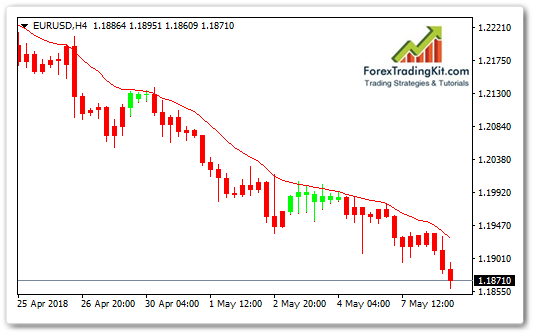Guide to Exponential Moving Average
In the previous article, we’ve learned Simple Moving Average and Weighted Moving Average In this article, we’ll learn Exponential Moving Average.
Introduction to Exponential Moving Average
As already mentioned, various moving averages smooth out price data and facilitate the possibility of identifying trends, which is especially important in volatile markets.
In order to reduce the lag using moving averages, technical analysts often use the Exponential Moving Average- EMA). The exponential moving average reduces the lag, giving more weight to the last prices compared to more distant prices. This allows you to respond much more quickly to the current price changes compared with the simple moving average.
The weight given to the last price depends on the period of the moving average. The shorter the period of the Exponential Moving Average, the more weight will be given to the last price. For example, the 10-period beginning of the Exponential Moving Average gives the weight of the last price of 18.18%, while the 20-period period – 9.25%. However, in this case, the calculation of the exponential moving average is much more complicated than the calculation of the conventional moving average.
Formula of Exponential Moving Average
The exponential moving average can be defined in two ways – as a percentage moving average or as a period moving average. Accordingly, in the percentage sliding, the only parameter is weight (percentage), and in the periodical – the period of the moving average.
The basic formula is as follows:

where i is the current time, i – 1 is the previous time, K = 2 / (n + 1), n ??is the average period in bars.
As mentioned above, you can change the exponential moving average period in two ways:
- By changing the coefficient K itself Changing the time period of the sliding one. Then the coefficient K will be recalculated as 2 / (1 + N), where N is the period you set.
- For example, for a 10-period moving average, the coefficient will be equal to.
This means that the 10-period exponential moving average is equivalent to the percentage exponential moving average with a coefficient of 18.18%.
It looks like this.

It should be noted that theoretically in the calculation of this sliding all prices are used, for the entire period of its construction and, in spite of the fact that the influence of old prices disappears with time, it does not disappear until the end. The effect of old prices disappears more quickly for shorter EMAs, compared to longer ones.
On a real chart, the difference between a simple moving average and an exponential is not very large, although it is present. It is believed that the exponential sliding ray reflects the market prices, all other things being equal because the effect of each previous price decreases exponentially with its remoteness from the current price.
Which type of sliding choose – depends entirely on your trading and investment style. A simple moving average certainly has a log, but an exponential moving average can react too strongly to rapid price changes. Some traders prefer to use exponential sliding for short-term trading to catch rapid changes in the market. Other traders prefer a simple moving average for long-term trading, allowing to identify long-term trend price changes.
In addition to everything, the use of the moving average depends on the currency pair on which you trade. The choice of the sliding always leads to the old dilemma of technical analysis – the choice between sensitivity and the desire to reduce the number of false signals.
The more sensitive the indicator, the more false signals it usually gives. The less sensitive the indicator, the fewer false signals it gives, but the longer it lags.